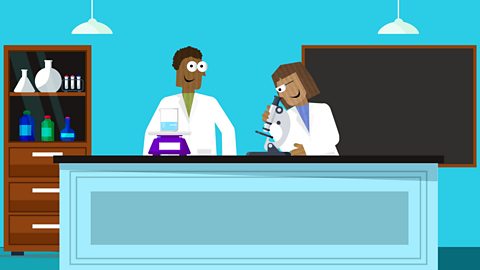What should I do with my rubbish?
Have you ever seen rubbish washed up on a beach or river bank?
Or thought about what happens to the bottles, bags and wrappers that some people drop on the ground?
Litter is anything that has been discarded irresponsibly β and it impacts all of our lives in lots of ways.
When litter is dropped it can get trapped in trees, roll into roads or block drains β making our communities untidy and unsafe.
Broken glass in parks and playgrounds can be dangerous for children and adults.
Animals can get trapped in litter β or even try to eat it, which can be very bad for their health.
And because litter is carried away by wind, it often makes it into our rivers and seas,where it can form huge floating rubbish heaps, like the Great Pacific Garbage Patch, which is three times the size of France!
Today, there are almost 8 billion people living on Earth β and each one of us produces waste.
In the UK, that amounts to 222 million tonnes of waste every year!
Globally, itβs more than 2 billion tonnes of waste!
So what happens to the waste that we produce?
More than half of UK waste is sent to landfill sites β where it is buried or stored underground β or burnt in incinerators.
There are more than 500 landfill sites in the UK alone and they often leak harmful gases and liquids into the air and the soil.
Waste incinerators can produce energy to power our homes but are also responsible for releasing harmful gases into theatmosphere.
But itβs not all bad news β because 46% of UK waste is recycled and reused for other things.
Paper is recycled to make products like toilet rolls and books.
We can turn recycled tin cans into road signs and car parts.
And people around the world are getting creative with recycled plastic β by turning it into sports equipment, clothes, even art!
Most of the things that you throw away can be recycled too.
When we reduce, recycle and reuse our waste, we can lessen our negative impact on the environment.
For every tonne of paper that we recycle,we save around 17 trees;we donβt use over 31,000 litres of precious water;and around 2.5 cubic metres of landfill space is left unfilled.
If we recycled our food waste by turning it into compost,we could cut our CO2 emissions by up to 25% and help in the fight against climate change.
There are lots of things that we can do to reduce, recycle and reuse our waste.
Imagine youβre having a party. Rather than using plastic film to keep your sandwiches fresh β you could store them in reusable containers instead.
You could crush any tin cans that you use to prevent animals getting trapped inside.
And tying a knot in the top of plastic bags will stop rubbish from spilling or leaking out into the surrounding environment.
What other things could you do with your rubbish?
Video summary
This short animated film explores what we should do with our rubbish.
Rubbish is the waste that we produce from items such as packaging and foods.
This film explains the impact waste is having on our planet and how we can work to reduce our rubbish to make a difference.
This short film is from the ΒιΆΉΤΌΕΔ Teach series Explain, Explore, Expand.
Teacher Notes
Explain
Litter is just one type of rubbish that is having a negative impact on humans, animals and the environment.
Letβs explore what happens to different types of waste and how we can make a positive difference.
Key Facts
- Litter includes anything that is discarded and not put in bins or waste containers.
- Litter includes smokersβ materials, fast food items, chewing gums, snack packings, sweet wrappings, soft drink tins, discarded bottles, broken glass along with bits of paper, discarded bags of rubbish, old food and dog waste.
- Litter physically harms people and wildlife.
- Dropping litter costs money and impacts the health and well-being of ourselves, animals and the environment. These costs are avoidable.
- Broken glass or metal pop tabs that have been left on beaches, in playgrounds, or on pavements often injure children who are playing barefoot. Many animals eat and are entrapped by litter.
- Litter is carried in every direction by wind or water. Litter gets carried onto our hills into our drains, or rivers and beaches and eventually the sea. Over time it breaks down, poisons animals, pollutes our ecosystems, and damages the environment.
- As much as 80% of the things we throw away could be recycled including cans, paper, plastic, glass and food.
- Cans: Aluminium and steel cans are 100% recyclable.
- On average the UK uses 16.2 billion aluminium cans. It takes the same amount of energy to make one new aluminium can as it does to recycle 20.
- Paper: It takes 17 trees to make one tonne of paper.
- In the UK, we use almost 10 million tonnes of paper each year. For every tonne of recycled paper used in place of virgin paper, we can save 380 gallons of oil, 7000 gallons of water, and around 3 cubic metres of landfill space. Currently we recycle around 80% of paper in the UK.
- Plastic: Many types of plastic are recyclable.
- It can take up to 500 years for plastic to fully decompose. Despite a βWar on Plasticβ 8 million tonnes of the worldβs plastic end up in our oceans each year, killing over 1,000,000 sea creatures.
- Glass is 100% recyclable.
- The UK currently only recycles around 50% of its glass. As the average UK household uses around 500 glass bottles and jars every year, thatβs around 250 glass containers heading to landfill sites or incinerators.
- Food is vital and uses valuable resources to produce.
- UK households throw away around 7 million tonnes of food every year. At the same time itβs estimated that over 8 million people in the UK are struggling to afford to eat.
- Whilst over 70% of Earth is covered in water, only 3% of that is freshwater which we can use to drink, wash and in irrigation for farming. It is estimated that 25% of that freshwater supply is used to grow food that we, ultimately, send to the landfill.
- This video references how litter can harm animals. Further information can be found here:
- .
- This video references The Great Pacific Garbage Patch. Further information can be found here:
- This video references UK statistics on waste. Further information can be found here:
- This video references how recycling can reduce environmental impact. Further information can be found here:
Explore
Where to pause?
- 00:21 - pause the video. Ask the children to identify litter they see everyday and where they see it.
- 01:50 - pause the video. Ask the children to identify what items they already recycle at home?
- 02:39 - pause the video. Ask the children why composting is better than putting it in the bin to be taken away? (Saves energy on transport, sorting, prevents build up of gases in landfill and can enrich the soil for growing).
Activities / Experiments
Activity 1: Become a change-maker and join events near you and support national and local schemes such as Keep Britain Tidy.
Activity 2: Build pride in your local community by setting a good example and encourage other people to respect the countryside.
Activity 3: Post on your social media feeds about litter picks youβve done, share good recycling tips and highlight local pollution issues.
Note: When picking up any litter when out and about make sure you do not put yourself in danger. Keep a bag and use protective gloves or a litter picker.
Fun Facts
- By 2050 we could have more plastic in the ocean than fish! You can find more at .
Expand
Discussion questions:
- Can you guess what percent of your waste is recycled?
- What would we need to do to improve this figure?
- Investigate the impact our rubbish and litter can have on animals and how you can help?
Additional Links:
Learning objective:
- To develop an understanding of the impact of litter on the environment by exploring what happens to different types of waste.
National Curriculum objectives:
- England: To develop an understanding of the impact of litter on the environment by exploring what happens to different types of waste.
- Scotland: To demonstrate awareness of the importance of respecting living things and the environment and of managing the Earthβs resources responsibly.
- Northern Ireland: To understand the need to respect and care for themselves, other people, plants, animals and the environment; How waste can be reduced, reused or recycled and how this can be beneficial.
- Wales: To understand how humans affect the local environment, e.g. litter, water pollution, noise pollution. Consider what waste is and what happens to local waste that can be recycled and that which cannot be recycled (old Curriculum).
- Non-statutory: Pupils should explore examples of human impact (both positive and negative) on environments, for example, the positive effects of nature reserves, ecologically planned parks, or garden ponds, and the negative effects of population and development, litter or deforestation.
How are shadows made? video
What are shadows? How are they made? What factors affect their size and shape? Letβs explore shadows in more detail β and learn how to turn your shadow into a clock!
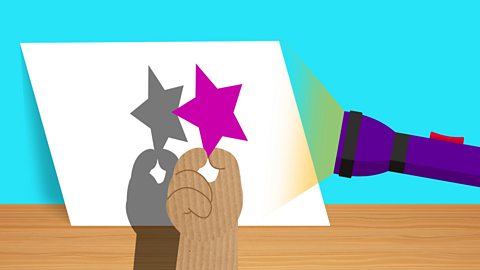
Changing environments. video
This film explains how important environments are, what factors can change the conditions of different environments and how that can affect the things living in them.
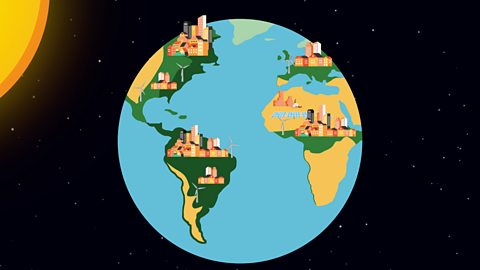
What is inheritance? video
This film explains how inheritance works in humans, animals and plants, and explores how humans use inheritance to their advantage, to produce animals and plants that are more productive.
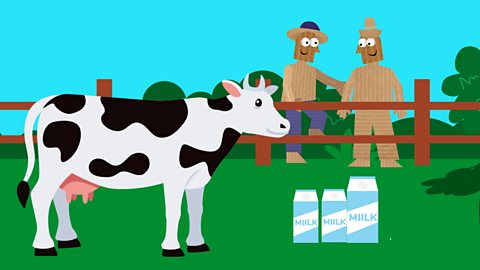
How do ecosystems work? video
This film explains the difference between biotic and abiotic, terrestrial, freshwater and ocean water ecosystems and looks at the effect of weather.
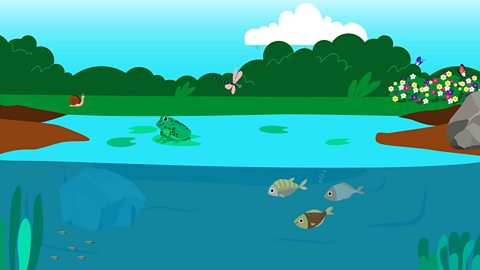
What are air and water resistance? video
This film explains the difference between water and air resistance and demonstrates examples of how resistance plays a part in our everyday life.
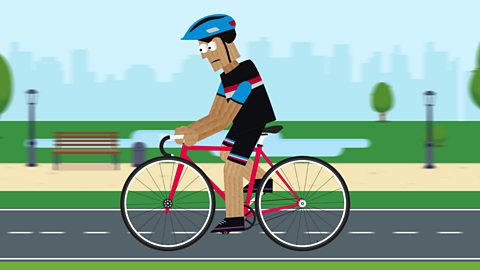
Day and night. video
This film explores the difference between day and night and demonstrates how the rotation of the earth's axis contributes to making seasons such as summer and winter.
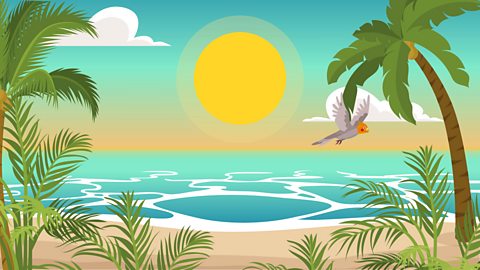
Mechanisms. video
This film explains what a mechanisms are, using examples of where they are used and how they make our lives easier.
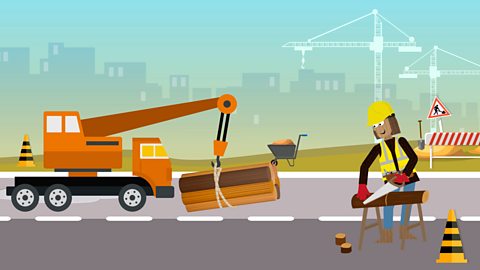
How to use scientific equipment. video
This film explains how we can use science equipment to develop our scientific abilities.
